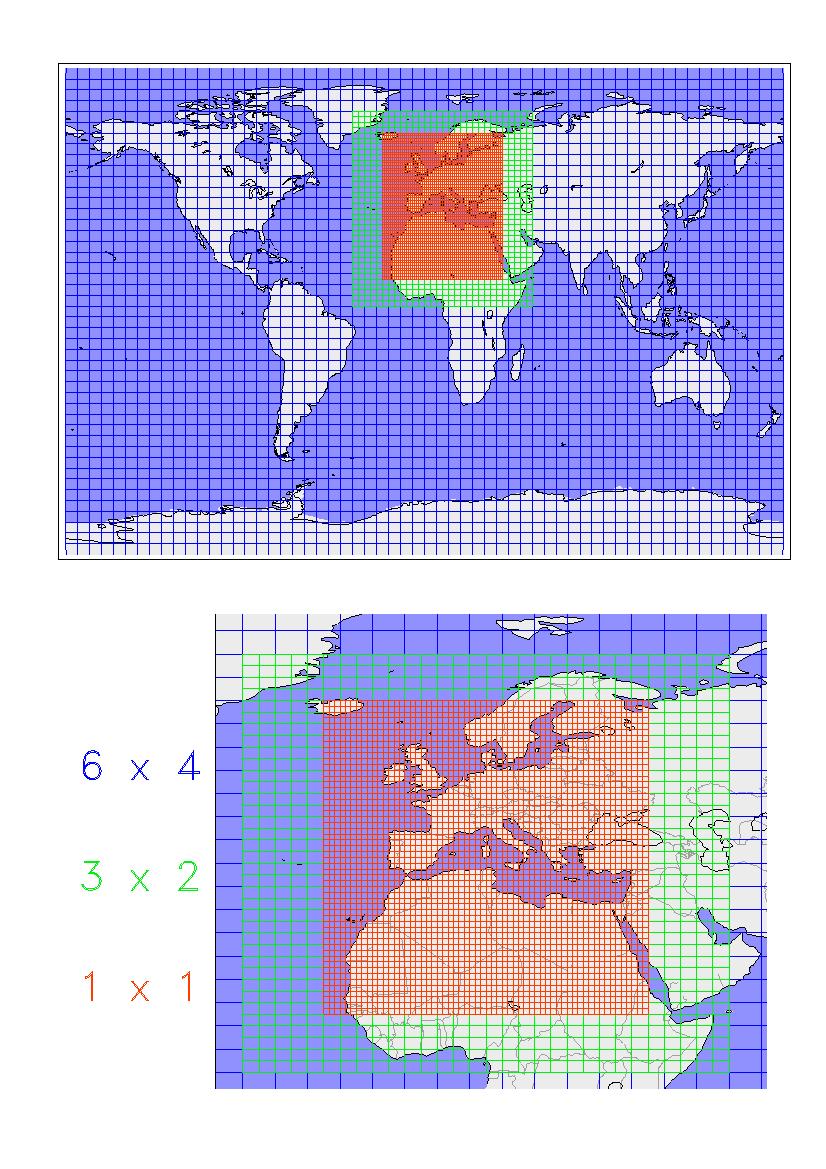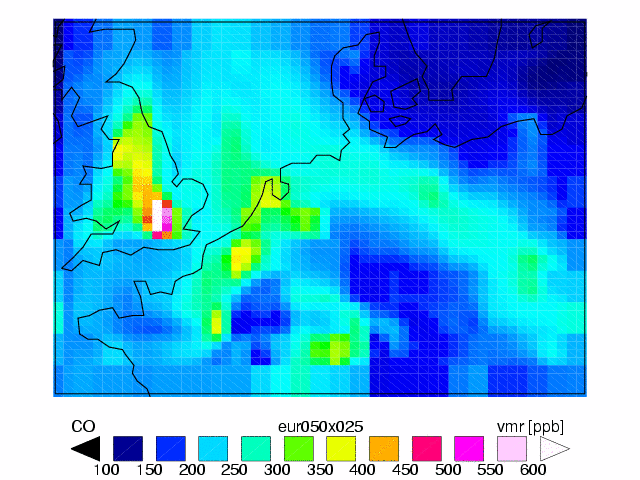In order to smooth the transition from the global grid (6x4) to the fine grid (1x1), usually an intermediate zoom region with 3x2 is also employed. The figure to the right shows an example with the zoom regions defined over Europe and Northern Africa. Zooming is possible over any region of interest.
The definition of vertical layers is linked to the 60 vertical layers of the ECMWF model. The tropospheric TM5 version uses a subset of 25 layers (mostly in the troposphere). Since January 2006, the ECMWF model uses 91 vertical layers, and a 34-layer subset has been created for TM5.
The TM5 model is an offline model, using preprocessed meteorological fields from ECMWF. Advection and convection schemes are similar to the TM5 predecessors, the TM2 (Heimann, 1988) and TM3 model. Advection is based on the slopes scheme (Russel and Lerner, 1987); the convection parameterisation is based on (Tiedke, 1989).
The basic model operations (advection, convection, sources, chemistry) are solved by operator splitting (Verwer et al., 1999). The model can be run as single-tracer version (with offline chemistry) or with full CBM4-based chemistry. In addition, aerosol modules are available. For the single-tracer version an adjoint model has been implemented.

Currently, a stratospheric-tropospheric version of TM5 is under development. It is designed to simulate chemical processes which occur from the ground upto 0.1 hPa. Documentation of this version is available here. This version of TM5 will be coupled to a GCM allowing studies of chemistry-climate interactions to be performed.
Finally, a high-resolution version is being developed. It allows zooming to a spatial resolution of 0.5x0.25 degrees. The figure to the right shows a snapshot of a simulation for CO on this resolution over Western Europe.
